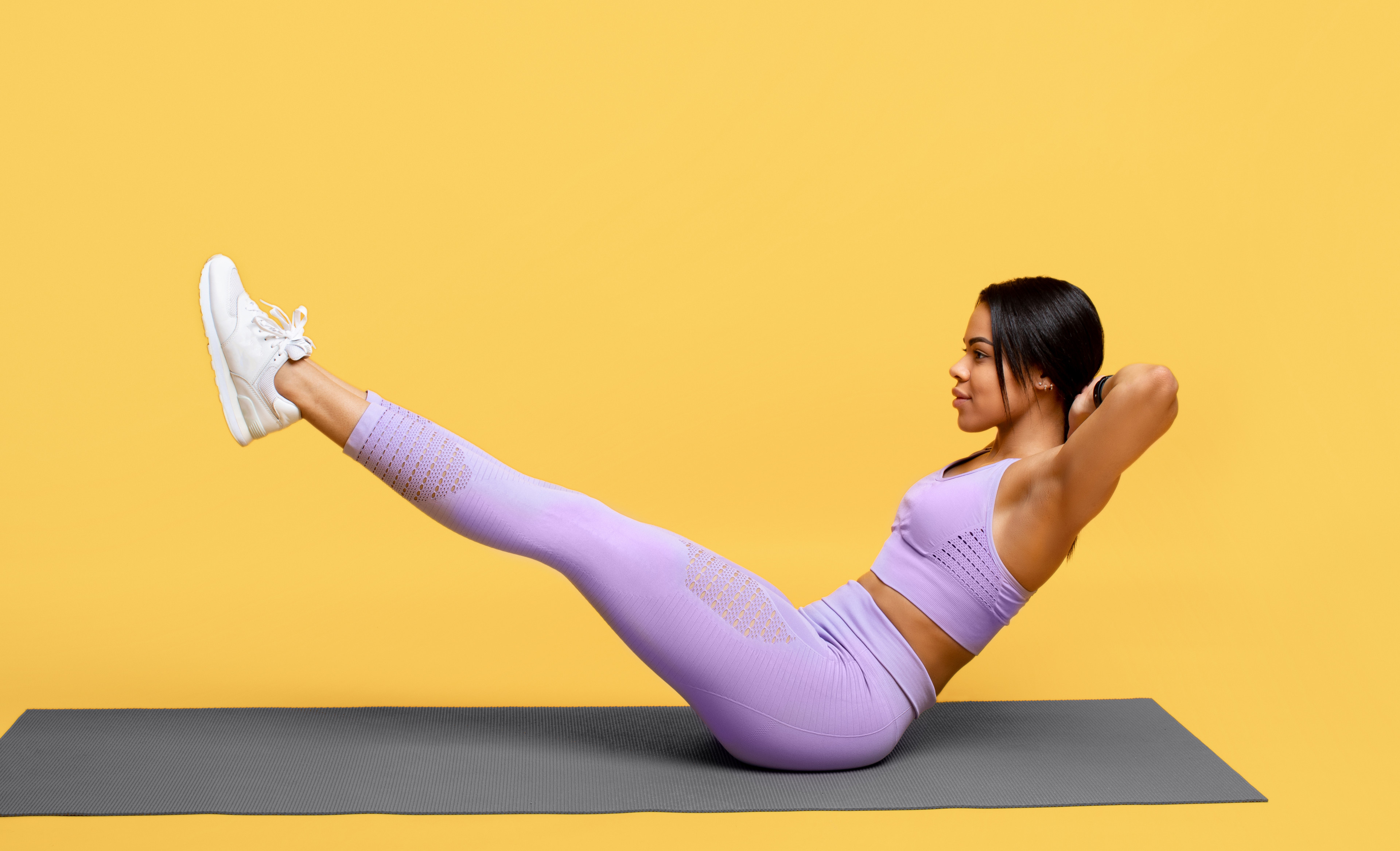
Prostock-Studio/iStock/Getty Images Plus via Getty Images
5 Reasons Why Core Stability Is Worth Training
Nope, it’s not the same as core strength.
By Sarah Klein•
What Exactly Is Core Stability?
Why Core Stability Is Important
How to Test Your Core Stability
The 6 Best Exercises to Improve Your Core Stability
How Often Should You Work on Core Stability?
They sound similar, but core stability and core strength are actually two entirely different things. Both are important for optimal workout performance and comfortably and confidently moving through daily activities. But to build core strength (and strength all over the body, in fact) you need to start with core stability.
What Exactly Is Core Stability?
Core stability refers to the ability of the muscles of your trunk—your abdomen and back from your pelvis to your shoulders—to support your spine (and the rest of your body) during activity, according to New York-Presbyterian Hospital.
Core stabilization allows for steady balance, healthy posture, and comfortable everyday movements. “I like to think of core stability as the reason why we don't fall over when we're walking,” says Peloton Instructor Emma Lovewell.
Core Stability vs. Core Strength: The Differences
That’s different from strength. “Core strength refers to the ability to hold a position with either body weight or a weighted load,” Emma says. “Core stability is more about maintaining a properly stabilized spinal position by resisting movement.”
Here’s another way to think of the differences: Old-school core strengthening exercises like sit-ups and crunches require large ranges of motion in the spine, which could ultimately lead to back pain, according to Nationwide Children’s. Core stability exercises often require you to hold one position, so they’re more static or isometric. They’re often more functional in that they mimic motions you’re more likely to do in everyday life.
Stability affects strength, though: Without a stable base to start from, many athletes struggle to progress in strength workouts, according to the National Academy of Sports Medicine (NASM). Plus, a lack of core stability can lead to pain and mobility issues, which make strength workouts even more challenging (and could even put you at risk of injury).
That doesn’t mean building core stability is easy, though: It may lay the groundwork for core strength, but core stability can be tricky to do, especially with perfect form, or as you add resistance or balance-challenging props like a BOSU ball, per the NASM.
Why Core Stability Is Important
Core stability keeps you upright, functional, and pain-free during any number of fitness and day-to-day activities, Emma says.
Here’s how:
Improved balance and coordination: When the muscles of your core are more stable, you’re better able to maintain balance, essential for avoiding falls and injuries, especially as we age, according to the American Council on Exercise (ACE).
Sports performance: In turn, when you have better balance, you’re also better able to move through different planes of motion with ease, like pivoting on the basketball court or lunging for a pickleball shot.
Injury prevention: When you lack core stability, your exercise form might suffer or you might compensate by drawing more on other muscles to power your movements. Overtime, this can lead to pain and injury, per the NASM.
Pain relief: If you already have existing back pain, core stability might be the solution. Building core stability led to improvements in pain intensity, quality of life, and core muscle activation in people with chronic low back pain, per June 2021 research in the Journal of Functional Morphology and Kinesiology.
Ease in daily activities: Climbing a ladder to clean your gutters, stretching to reach a glass on the top shelf of a cabinet, grabbing the dog’s toy from under the couch—all sorts of everyday to-dos require balance and coordination that start in your core. Stability in those muscles allows you to do all of these actions and more with a lower likelihood of hurting yourself.
How to Test Your Core Stability
There are a number of simple ways to test your own core stability right at home. But the easiest is standing on one foot. If you have a hard time balancing in that position, you may need to work on your core stability, Emma says.
For a slightly more advanced version, try a bird dog (see below for step-by-step instructions). “If you have a hard time balancing on all fours with the opposite leg and arm extended, then you might need to work on your core stability,” she says.
If you work with a personal trainer, they may try assessing your core stability with other more advanced movements as well, according to the NASM, like a push-up or an overhead squat. But no matter the test you choose, what’s important is to reassess your stability after several weeks. If you’ve been slowly but surely working on improving your core stability, you should discover it’s noticeably easier to stand on one foot, for example, when you reassess.
Factors That May Impact Your Core Stability
Leading a more sedentary lifestyle with limited movement and activity can contribute to lower core stability, Emma says. The more activity you do that requires both your arms and your legs to move at the same time, the more stable your core will become over time, she says. (Even something as straightforward as walking works!)
The 6 Best Exercises to Improve Your Core Stability
Wondering how to improve your core stability? Many compound exercises—as well as more targeted core exercises—work this vital component of fitness.
No matter which core stability moves you decide to practice, you want to start by engaging your core. There are two primary ways to do this, according to the NASM:
Intervertebral stability: Think about pulling your belly button toward your spine.
Lumbo-pelvic stability: Brace or tighten your core muscles. Think about preparing yourself before someone punches you in the stomach.
Here are a few of Emma’s favorite core stability exercises to try:

1. Bird Dog
Start on your hands and knees, with your palms planted directly under your shoulders and your knees directly under your hips. Keep your spine neutral.
Engage your core and extend your right leg behind you to hip height with your right foot flexed.
At the same time, extend your left arm to shoulder height with your thumb facing up. Your arm and leg should form a straight line with your torso. Try not to arch your back.
Hold for a few seconds, then return to the starting position.
Continue for your desired number of reps, then repeat on the other side.

Lie down flat on your back with your knees lifted in tabletop position and your arms extended straight up toward the ceiling in line with your shoulders.
Engage your core. Inhale as you simultaneously lower your right arm back toward the floor above your head and your left leg straight away from your midline toward the floor in front of you. Make sure to lower slowly and with control. Don’t let your arm or leg touch the floor.
Exhale while simultaneously drawing both your arm and leg back up to starting position using your core muscles.
Repeat on the opposite side.
Continue alternating sides for your desired number of reps.
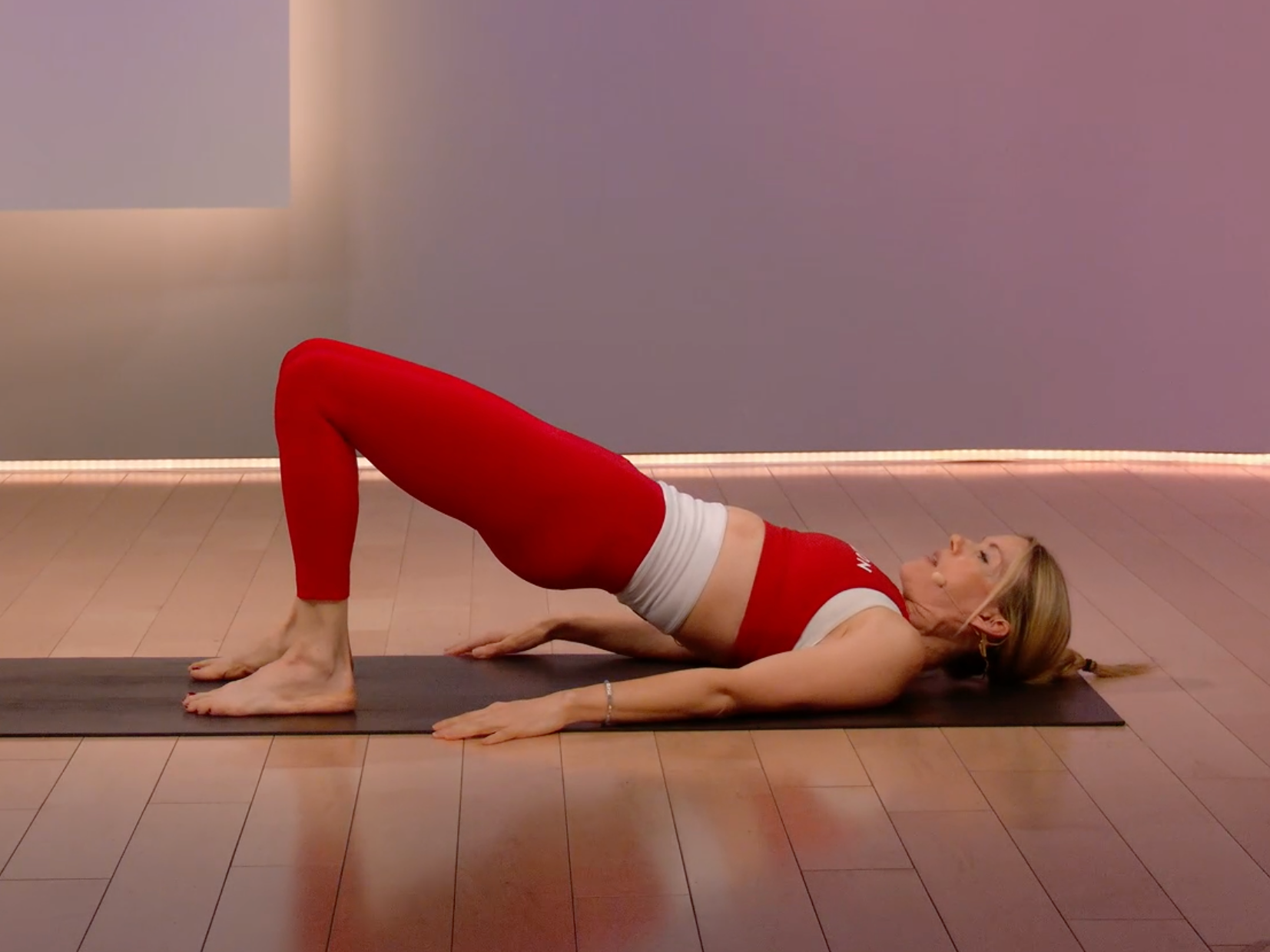
Start lying flat on your back with your arms by your sides. Bend your knees and plant your feet flat on the ground, about hip-distance apart and a foot or so away from your glutes.
Squeeze your glutes and engage your core as you press through your heels to lift your hips up to form a diagonal line from your shoulders to your knees.
Hold at the top of the bridge for a moment.
Slowly return to the starting position.
Repeat for your desired number of reps.
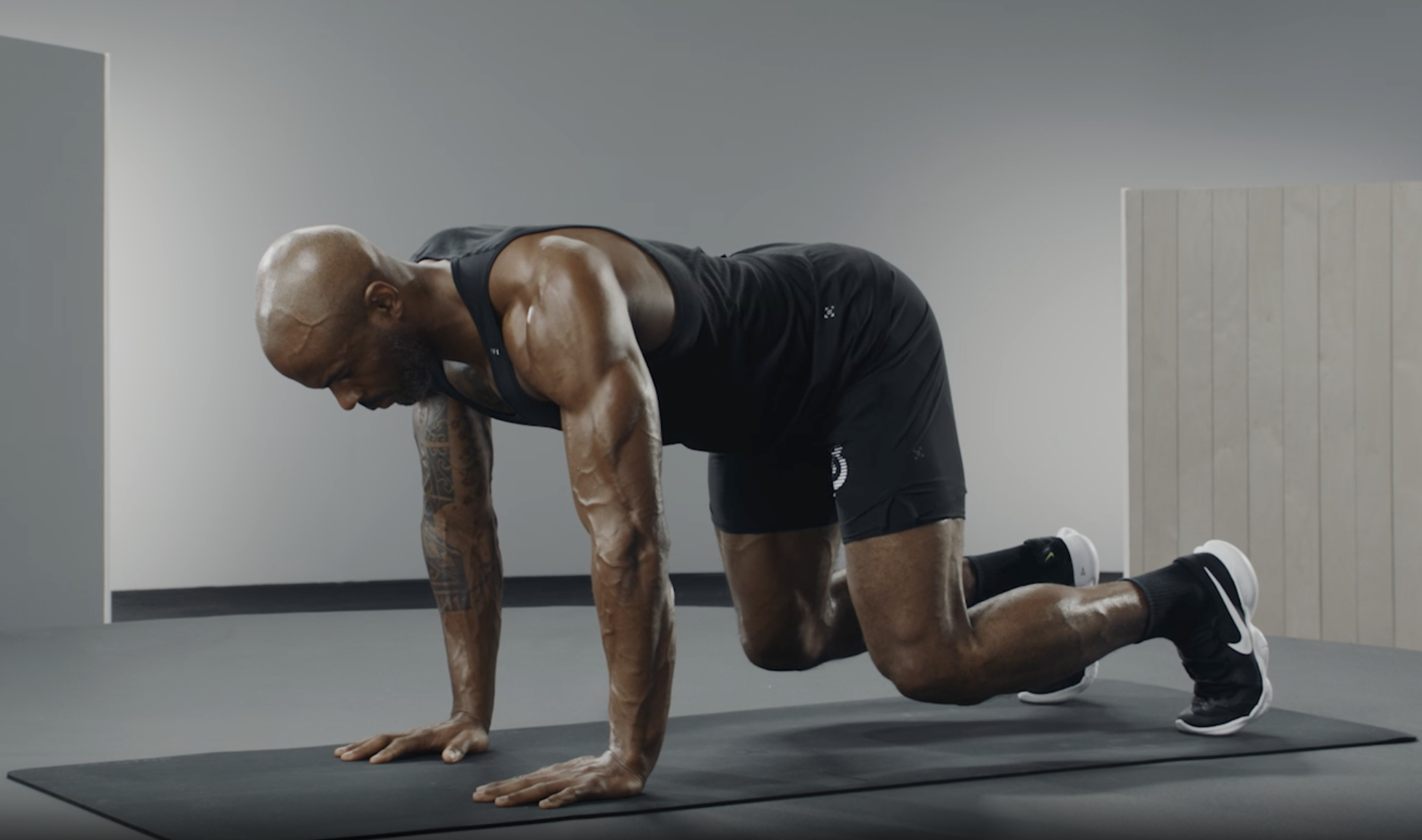
4. Bear Plank
Start on your hands and knees, with your palms planted directly under your shoulders and your knees directly under your hips. Keep your spine neutral and tuck your toes.
Engage your core and raise your hips slightly to lift your knees a couple of inches off the floor.
Keeping your hips level, hold this position for 10 to 30 seconds, then relax to the starting position.
Repeat for your desired number of sets.
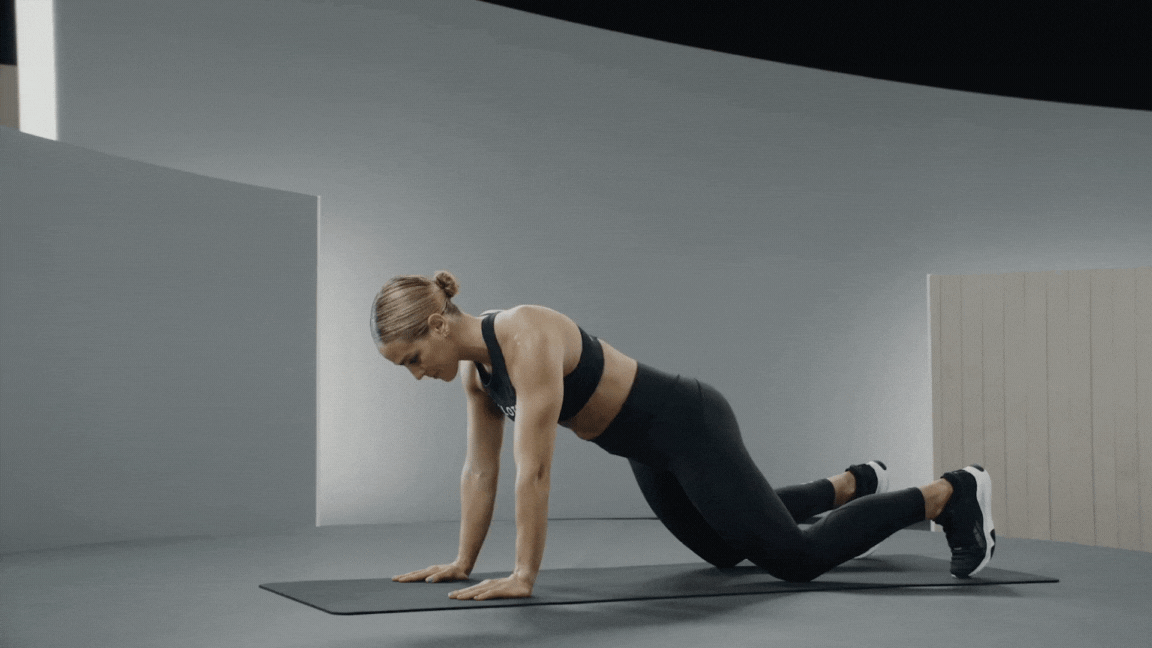
5. Plank With Shoulder Tap
Start in a high plank position balancing on your toes with your palms planted on the ground underneath your shoulders.
Brace your core and glutes to maintain a straight line from your heels to hips to head.
Without allowing much movement in your hips, lift your right hand off the floor and tap it to your left shoulder.
Return your right hand to the floor.
Lift your left hand off the floor and tap it to your right shoulder.
Return your left hand to the floor.
Continue alternating shoulder taps for your desired amount of time or reps.
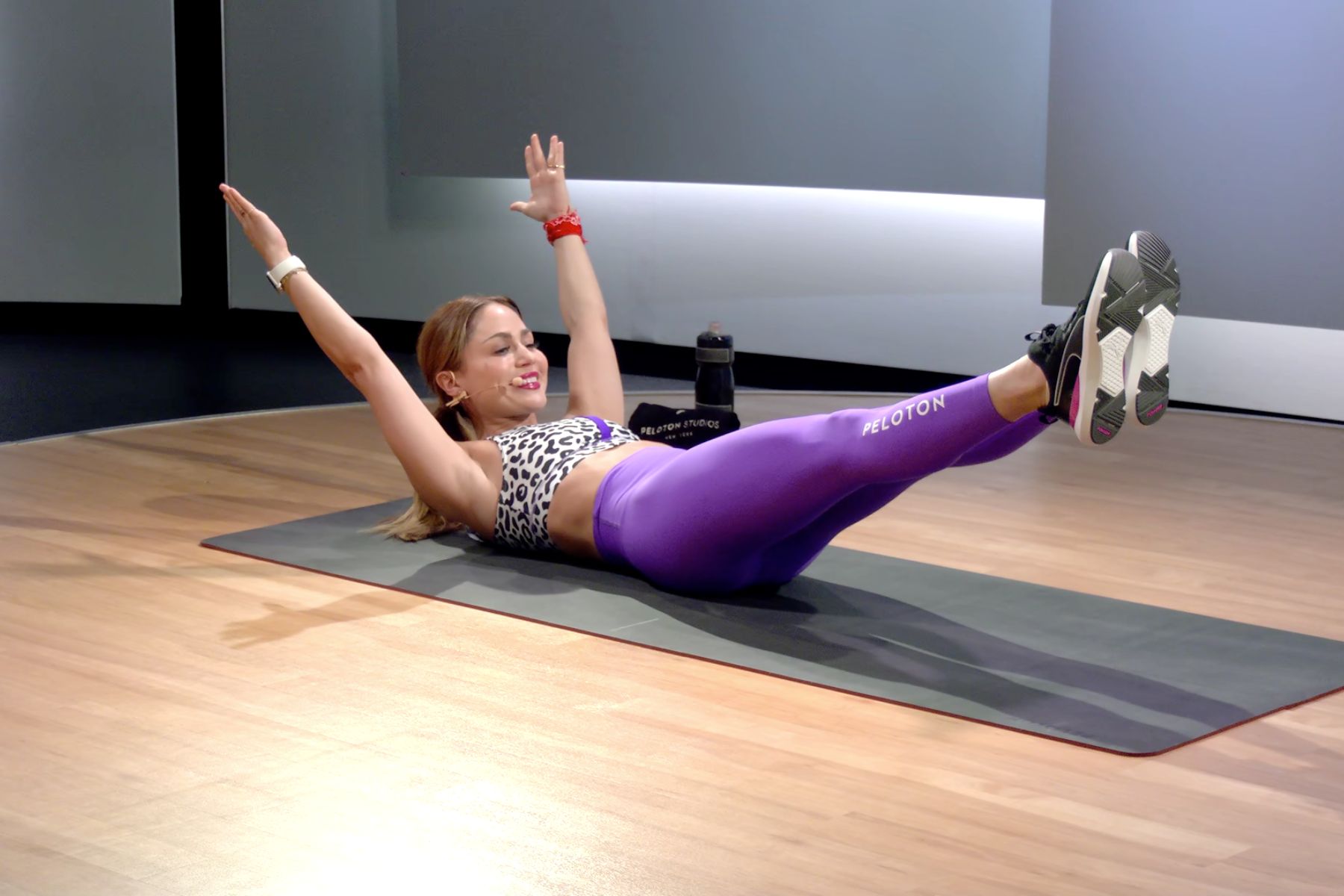
6. Hollow Hold/Supine Isometric Hold
Start lying down on your back with your knees lifted in tabletop position.
Tilt your pelvis slightly up so the small of your back is pressed firmly into the ground. Maintain this contact throughout the movement to keep your core engaged.
Extend both of your legs out in front of you at about a 45-degree angle off of the floor.
Extend your arms over your head, aiming to keep your biceps in line with your ears.
Hold for 30 seconds, then relax to the starting position.
Repeat for your desired number of sets.
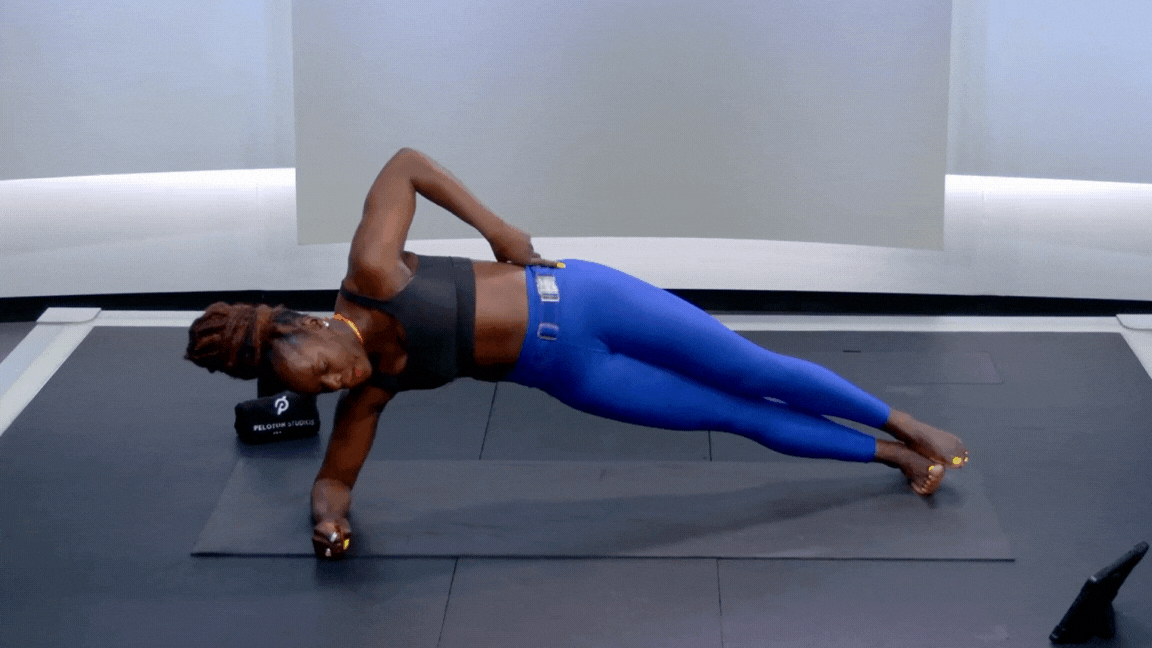
7. Side Plank
Lie on one side with your elbow underneath your shoulder. Straighten your legs and stack your feet on top of each other.
Engage your core and lift your hips so your body forms a diagonal line from heels to hips to head.
Hold for 30 seconds, then relax to the starting position.
Repeat for your desired number of sets, then switch to the other side.
How Often Should You Work on Core Stability?
You can work on core stability daily, Emma says. However, if you do a really intense, targeted core routine one day, it’s probably best to skip core work the following day, per the NASM.
Sprinkle some of these movements into a warm-up, a core strength workout, a full-body routine, or even an evening stretch session. Aim for 1 to 3 sets of 10 to 15 reps (or 10- to 30-second holds) per exercise, according to the NASM. And remember to maintain a slow and controlled tempo throughout each movement.
Whenever you decide to work on core stability, incorporate some of the exercises above or others where your arms and legs are both moving at the same time, Emma says. And don’t forget getting more activity overall helps, too: Walking and running do wonders for core stability.
This content is for informational and educational purposes only and does not constitute individualized advice. It is not intended to replace professional medical evaluation, diagnosis, or treatment. Seek the advice of your physician for questions you may have regarding your health or a medical condition. If you are having a medical emergency, call your physician or 911 immediately.

Featured Peloton Instructor
Emma Lovewell
Emma has spent much of her career in fitness and wellness as a professional dancer, dance coach, fitness model, personal trainer, and Pilates instructor.
Level up your inbox.
Subscribe for a weekly dose of fitness, plus the latest promos, launches, and events.
By providing your email address, you agree to receive marketing communications from Peloton.
For more about how we use your information, see our Privacy Policy.





